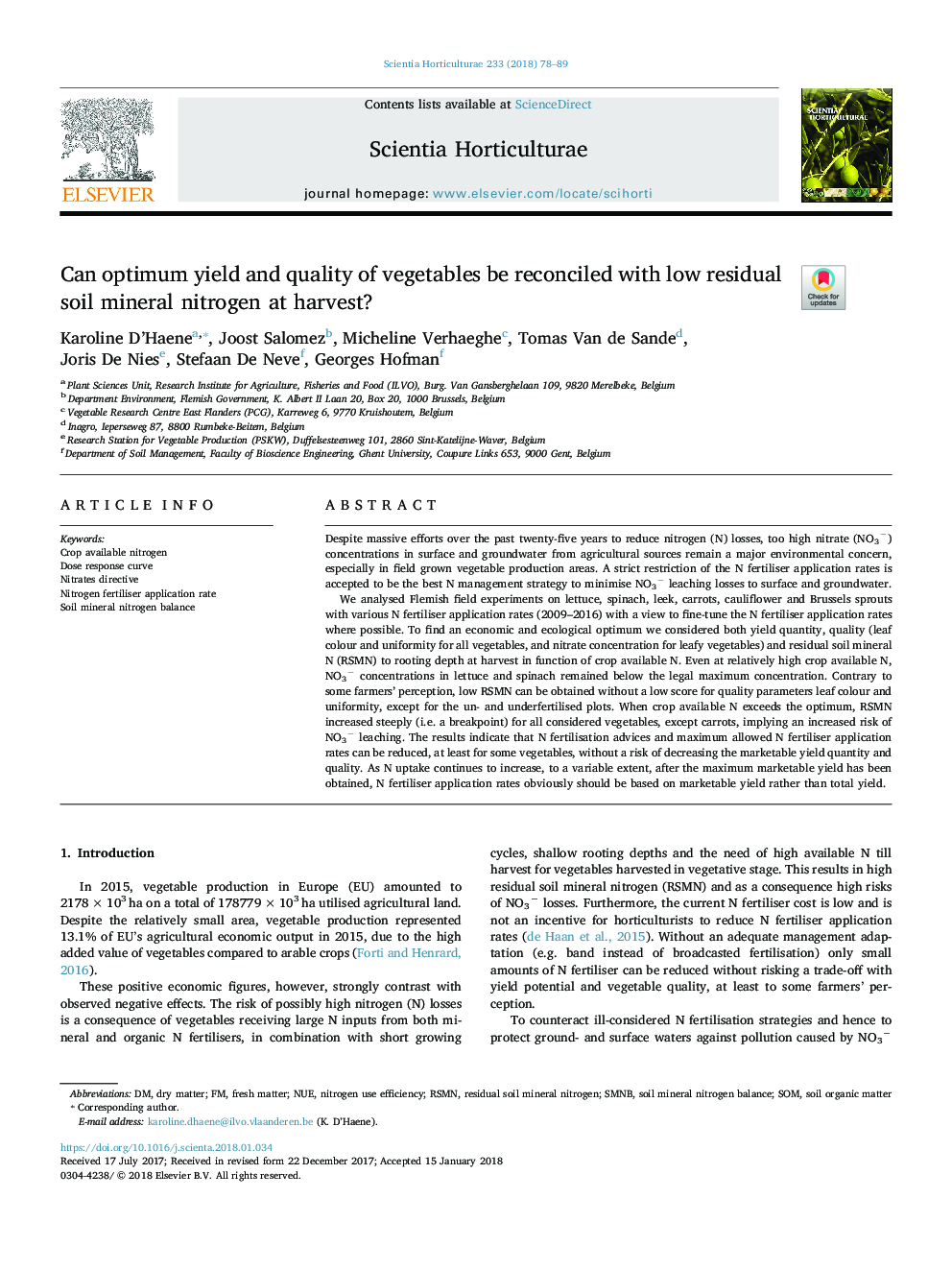| Article ID | Journal | Published Year | Pages | File Type |
|---|---|---|---|---|
| 8892832 | Scientia Horticulturae | 2018 | 12 Pages |
Abstract
We analysed Flemish field experiments on lettuce, spinach, leek, carrots, cauliflower and Brussels sprouts with various N fertiliser application rates (2009-2016) with a view to fine-tune the N fertiliser application rates where possible. To find an economic and ecological optimum we considered both yield quantity, quality (leaf colour and uniformity for all vegetables, and nitrate concentration for leafy vegetables) and residual soil mineral N (RSMN) to rooting depth at harvest in function of crop available N. Even at relatively high crop available N, NO3â concentrations in lettuce and spinach remained below the legal maximum concentration. Contrary to some farmers' perception, low RSMN can be obtained without a low score for quality parameters leaf colour and uniformity, except for the un- and underfertilised plots. When crop available N exceeds the optimum, RSMN increased steeply (i.e. a breakpoint) for all considered vegetables, except carrots, implying an increased risk of NO3â leaching. The results indicate that N fertilisation advices and maximum allowed N fertiliser application rates can be reduced, at least for some vegetables, without a risk of decreasing the marketable yield quantity and quality. As N uptake continues to increase, to a variable extent, after the maximum marketable yield has been obtained, N fertiliser application rates obviously should be based on marketable yield rather than total yield.
Keywords
Related Topics
Life Sciences
Agricultural and Biological Sciences
Horticulture
Authors
Karoline D'Haene, Joost Salomez, Micheline Verhaeghe, Tomas Van de Sande, Joris De Nies, Stefaan De Neve, Georges Hofman,
